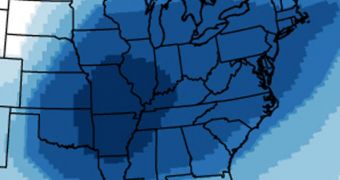Over the last 50 years, large portions of the US East Coast have been shielded from the effects of climate change by a so-called “warming hole,” an atmospheric structure under which temperatures are kept low. This formation was created due to the massive release of particulate matter in the atmosphere.
Climatologists know that small, particulate matter can contribute to cooling the atmosphere, by reflecting large amounts of sunlight into space, without allowing it to hit the planetary surface and get trapped by the greenhouse effect.
While areas on the East Coast also release greenhouse gases such as carbon dioxide and methane, the amount of particulate matter was higher than in other regions of the US. This contributed to hiding the effects of global warming over this area.
The investigation that led to this conclusion was conducted by climate scientists at the Harvard School of Engineering and Applied Sciences (SEAS). The team says that the warming hole was just a temporary effect, and that the consequences of global warming will make themselves felt in this region soon.
Details of the new study appear in the latest issue of the esteemed scientific journal Atmospheric Chemistry and Physics. Data presented within led experts to forecast a bleak evolution for the climates of heavily industrialized nations such as China and India.
“What we've shown is that particulate pollution over the eastern United States has delayed the warming that we would expect to see from increasing greenhouse gases,” former SEAS applied physics graduate student and lead study author, Eric Leibensperger, PhD, explains.
“For the sake of protecting human health and reducing acid rain, we've now cut the emissions that lead to particulate pollution,, but these cuts have caused the greenhouse warming in this region to ramp up to match the global trend,” he goes on to say.
Central and eastern states on the US were somewhat protected from global warming through particulate matter emissions. With the passing of the Clean Air Act, in 1970 and 1990, the layer of particulates began to thin, and global warming started catching up.
“Something similar could happen in China, which is just beginning to tighten up its pollution standards. China could see significant climate change due to declining levels of particulate pollutants,” SEAS atmospheric chemistry senior research fellow and study coauthor, Loretta J. Mickley, concludes.

 14 DAY TRIAL //
14 DAY TRIAL //